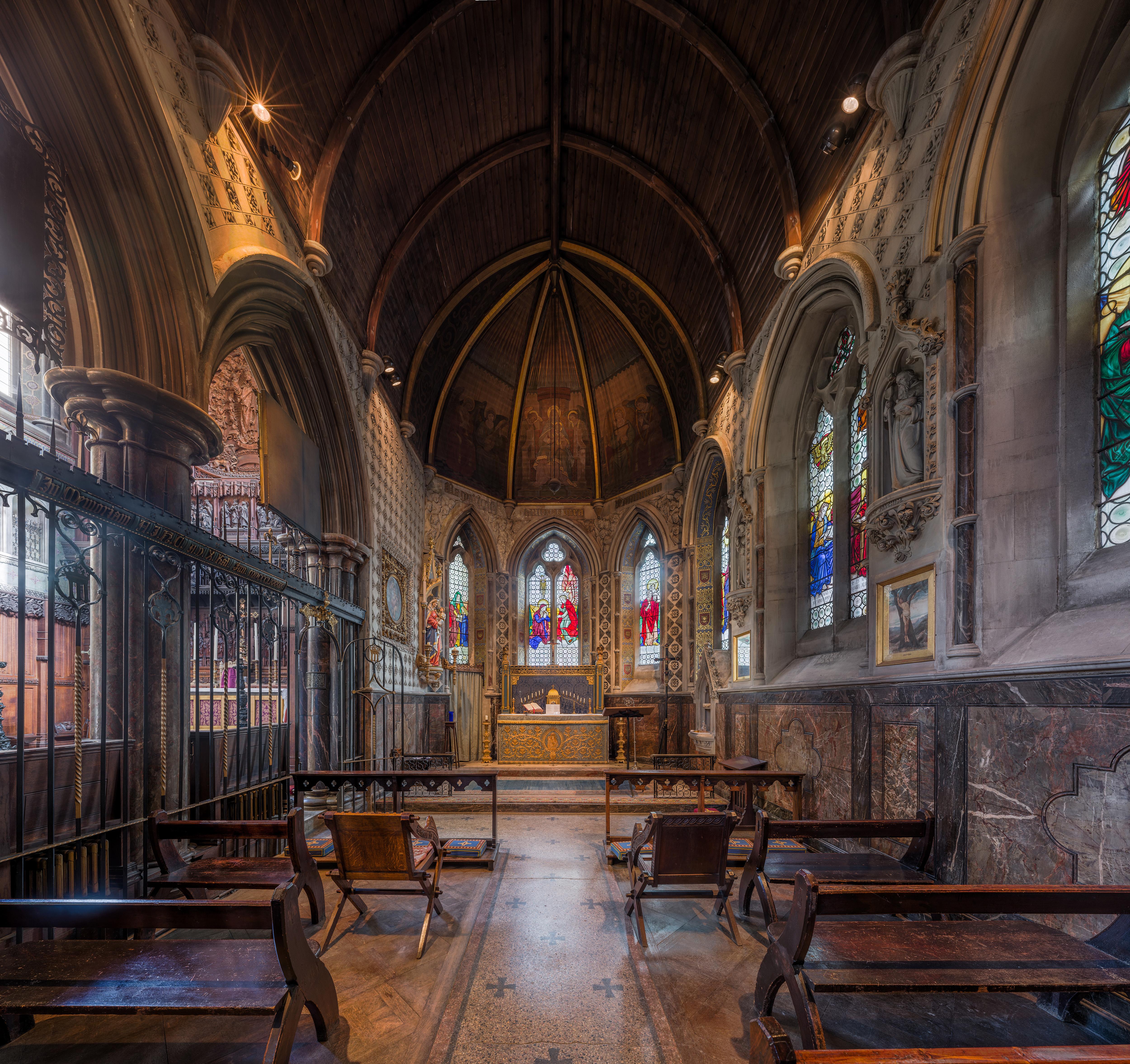Christ Church
Kensington, Greater London
Christ Church was built as an Anglican parish church in 1870, and designed by W&G Audsley.

St Cuthbert’s is one of London’s largest and finest 19th century churches, it rises dramatically amongst the Victorian terraces of Philbeach Gardens, forming a group with the adjacent clergy house and Philbeach Hall.
Earls Court, Greater London
It was constructed between 1884 and 1887 to designs by the architect Hugh Roumieu Gough. Built of brick, with stone dressings, it is in a style which recalls the monastic churches of the Middle Ages.
The church suffered damage from Second World War bombs, which blew off the roof. It was reclad in copper sheets after the war. The failure of this material led to water penetrating the interior, putting the building very much at risk. During the 1990s the church was reroofed using Westmorland slates.
The interior of St Cuthbert’s reflects a process of enrichment which extended into the inter war years and was overseen by the first vicar, Henry Westall, who was in office from 1883 to 1924. The church was designed as a container for rich fittings. Some of these were the work of HR Gough, including the enormous pulpit and rood loft.
Much of the interior decoration, carving in stone and wood, mosaic work and embroidery, was undertaken by craft guilds formed by parishioners in which women played a leading role. Stained glass by Kempe and Tute further enriched the interior (though some was lost in World War II).
The most dramatic of all the furnishings is the enormous reredos, inspired by Spanish precedents, and designed by the priest architect Ernest Geldart. Designed in 1899, it was finally installed in 1914. St Cuthbert’s significance as an Arts & Crafts shrine is largely due to the work done there by William Bainbridge Reynolds between the 1890s and 1930s. One of the most talented metalwork designers of the period, Reynolds was responsible for the extraordinary clock at the west end of the nave, the screens to the side chapels and baptistery, the altar rails, Paschal candlestick, the Royal Arms and much else. He made the tabernacle on the high altar in 1933, two years before his death. The most famous of his works in the church is the massive lectern (1897). John Betjeman, who greatly loved St Cuthbert’s, described its style as 'Nouveau Viking'.
Kensington, Greater London
Christ Church was built as an Anglican parish church in 1870, and designed by W&G Audsley.
Hammersmith, Greater London
The church, built between 1915-16, was founded by Augustinian priors and continues to be served by the order from the neighbouring priory.
Holland Park, Greater London
Exquisite detail and craftsmanship throughout the whole building.